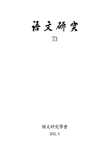학술논문
玉所 權燮의 演戱詩 考察
이용수 91
- 영문명
- A Study of Okso Kwon Seop’s Dramatic Poetry
- 발행기관
- 어문연구학회
- 저자명
- 이권희(Kwon-hee, Lee)
- 간행물 정보
- 『어문연구』語文硏究 第73輯, 235~259쪽, 전체 25쪽
- 주제분류
- 어문학 > 한국어와문학
- 파일형태
- 발행일자
- 2012.09.28
5,800원
구매일시로부터 72시간 이내에 다운로드 가능합니다.
이 학술논문 정보는 (주)교보문고와 각 발행기관 사이에 저작물 이용 계약이 체결된 것으로, 교보문고를 통해 제공되고 있습니다.

국문 초록
본 연구는 조선 시단에서 가장 특색 있는 시인인 옥소 권섭(1671~1759)의 한시 중에서 연희시만을 연구의 대상으로 하여 그 특징과 의의를 밝혔다. 옥소가 활약한 17ㆍ8세기는 임ㆍ병양란을 겪은 후 상하층의 자각으로 우리 문화에 관심을 갖기 시작한 시기였다. 옥소의 연희시는 당대 하층민중들의 삶을 소개하여 그가 가진 우리 연희에 대한 관심을 보여주고 있다고 할 수 있다.
옥소가 민중들의 연희에 관심을 갖게 된 것은 12세 때부터이다. 옥소는 연희와의 만남을 통해 그것을 연희시로 형상화하여 옥소의 한시를 구성하는 하나의 영역으로 삼았다. 옥소는 「六詠」이라는 연시조에서도 궁중음악과 민중음악의 연희 양상을 작품화하여 연희시로 승화시켰다.
옥소의 연희시는 황창무를 소재로 한 작품과 솟대놀이를 소재로 한 것, 사찰 연희를 소재로 한 것 등이 대표적이다. 옥소가 54세 경에 지은 것으로 보이는 「黃昌舞古風走筆示兒輩」는 옥소의 연희시를 대표하는 작품이다. 옥소의 이 작품과 김만중의 「觀黃昌舞」를 비교해보면 춤의 배경과 표현의 일부가 같으나, 옥소는 황창무에 몰입하고 감동하는 과정을 집중적으로 표현한 반면, 김만중은 황창의 행위를 통해 사회적으로 애국심을 고양시키고자 하는 차이가 있다.
솟대놀이를 소재로 지은 「觀村中優戱」는 광대의 자부심을 표현함으로써 문학적 완성도를 높였다. 옥소는 연희시를 지으면서 연희의 동작만을 묘사하는데 그치지 않고 자신의 심정이나 연희자의 마음을 대신 표출하려고 노력하였다. 이러한 표현 방식이 옥소의 연희시를 관통하는 정서의 핵심인 연민이다.
사찰에서의 연희를 대상으로 한 「夜觀沙彌舞」에서는 앞부분에서 연희의 배경이나 장면을 묘사하고, 뒷부분에서는 자신의 심정 표출과 연희자의 심정을 대신 표출하여 작품을 마무리하고 있다. 이러한 구성은 옥소의 한시가 가지고 있는 전형적인 연희시 구성방식이라 할 수 있다.
옥소의 연희시는 조선후기 다양한 연희시들과 비교해도 손색이 없는 작품으로서의 가치가 있으며, 당대 민간에 전승되고 있는 다양한 형태의 연희 실체를 알려준다는 점에서 의의가 있을 뿐만아니라 변화하는 시대의 모습을 보여 준다는 점에서 그 의의가 높다.
영문 초록
In this research, focusing on the dramatic poetry among his Chinese poetry, I found the significance and characteristics of works of Okso Kwon Seop, the most featured poet in the world of poetry during Joseon Dynasty. The 17th to the 18th century when Okso was active was the time when people started to pay attention to Korean culture from the realization of the upper and lower classes after the two wars, the Japanese invasion of Korea in 1592 and the Chinese invasion of Korea in 1636. Okso’s dramatic poetry presented the lives of people of the lower classes of his time to the public and showed his interest in Korean dramas and performances.
He was 12 years old when he first had an interest in the people’s dramas and performances. Through his encounter with dramas and performances he embodied them in his dramatic poetry and he adopted it as an area in composing his Chinese poetry. He sublimated the aspects of court music and popular music to literature in a series of his Chinese poems, Yook Yeong(The Six Songs).
The poems with the themes of Hwangchnagmu(The sword dance), Sottaenori(Dance around the sacred pole) and plays in temples are the examples of Okso’s dramatic poetry. Especially Hwangchnagmu, which is estimated to be written at the age of 54, is his representative work. Comparing this work of Okso with the one of Kim Manjoong, we can find the difference between them. While Okso intensively expressed the process of getting absorbed in the dance and moved by it, Kim Manjoong tried to enhance patriotism through the dance in Korean society even though the background of the dance and some expressions were partly same.
The poem about Sottaenori achieved greater literary completion by expressing the clown’s pride. When writing a dramatic poem, Okso did not merely describe the actions and movements of the performances but also he tried to express his emotions or the performer’s feelings instead. This kind of way of expression is compassion, the core emotion penetrating Okso’s dramatic poetry.
In the poem about plays in temples, he described the background and scenes of the performance in the first half and he concluded the poem by expressing his own feelings and the player’s emotions instead in the second half. This kind of structure is the typical format of Okso’s dramtic poetry in his Chinese poetry.
Okso’s dramatic poetry is worth good enough for matching a variety of any different dramatic poems in the late Joseon Dynasty and it is meaningful to show the substance of various types of performances handed down among the people in his day. Furthermore, it should be highly estimated that his poetry reflects the changing aspects of the age.
목차
〈국문초록〉
Ⅰ. 서언
Ⅱ. 연희시의 배경
Ⅲ. 연희시의 실상
Ⅳ. 특징 및 의의
Ⅴ. 結言
참고문헌
Abstract
해당간행물 수록 논문
- 해방 이후 한국인 이름의 특성 및 변천 양상에 대한 사회언어학적 연구
- 한ㆍ중 초기 모더니즘 시론의 비교 연구
- 김소월 시의 언어미학적 특성 연구
- 미주 지역 한인의 국어교육 전개양상
- 雪峯 姜栢年의 漢詩 硏究
- 광고언어의 동음이표기(同音異表記)에 대하여
- 1910년대 초반 서사적 계몽성의 마지막 모습
- 유치환의 자연시 연구
- 학술논문 문형의 문법적 특징과 담화 기능에 대하여
- 추정과 비추정의 ‘-겠-’의 의미
- 정선방언 운율유형에 관한 연구
- 조선후기 通信使의 贐章 연구
- 일제강점기 3대 전래동화집의 성격과 그 편찬 배경
- 淸陰 金尙憲의 遊仙詩 小考
- 玉所 權燮의 演戱詩 考察
- 『독립신문』소재 『애국가』 의 텍스트 언어학적 특징
- 허균 문학 의식의 기원
참고문헌
관련논문
어문학 > 한국어와문학분야 BEST
- 국어의 줄임말 현상에 따른 언어변이 양상과 문제점
- ‘밈(meme)’을 활용한 고전문학과 문화콘텐츠의 상호 협력과 융복합교육
- 연구 동향 분석을 통해 본 학문 목적 한국어교육 연구의 실태와 제언
최근 이용한 논문
교보eBook 첫 방문을 환영 합니다!

신규가입 혜택 지급이 완료 되었습니다.
바로 사용 가능한 교보e캐시 1,000원 (유효기간 7일)
지금 바로 교보eBook의 다양한 콘텐츠를 이용해 보세요!






